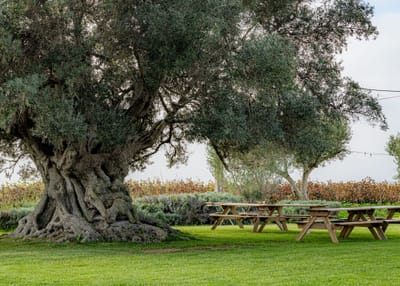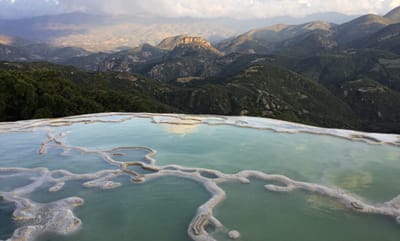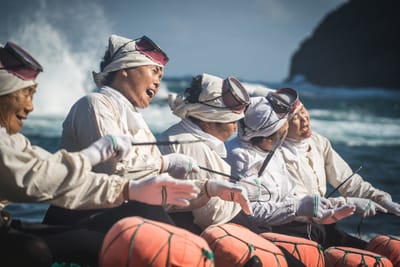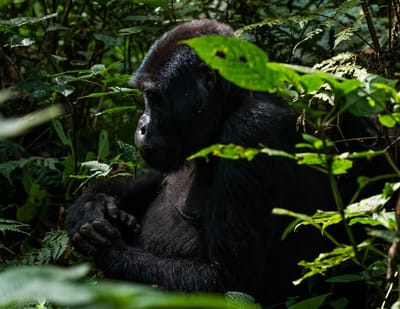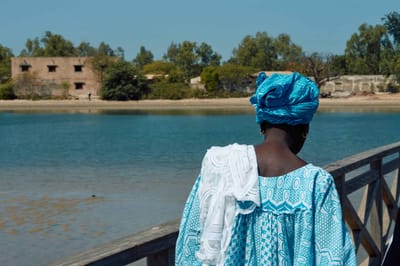Admittedly, one doesn’t quite associate rich, vibrant colors when thinking of the Arctic, known for its frozen seas, ancient glaciers, epic wildlife, and remote communities so inaccessible that most people assume the area is only washed in whites of ice and snow.
However, the Arctic reveals a world teeming with unique colors and tones—vibrant purple wildflowers, lush velvet green moss, deep reds from the iron-rich soil, and shades of blue so intense they leave you in awe. Even its fauna, like the playful puffin and striking eider duck, display a remarkable color palette, challenging any notions of dullness in this territory. Even within the human settlements, the colors of boats, homes, and seaside docks starkly contrast with the snowy backdrop, painting the Arctic in broad strokes of vivid color. Nature has undeniably crafted one of the most breathtaking and artistically inspiring color palettes in this region.
Glacial Blue Snow
While we all know that water is colorless, that concept seems unreal when we first glance upon a glacier. When sunlight falls on snow, it reflects a blinding white color, but at the edge of a glacier, the ice is brilliant blue and turquoise.
Snow’s reflectivity stems from the multitude of air pockets trapped between its flakes. These air bubbles scatter all wavelengths of light, collectively giving snow its pristine white appearance. However, as time passes, glaciers become buried beneath successive layers of ice and snow. The weight of these layers squeezes the air out of the deeper ice strata, gradually eliminating the air bubbles and causing the ice to form into large, densely packed crystals.

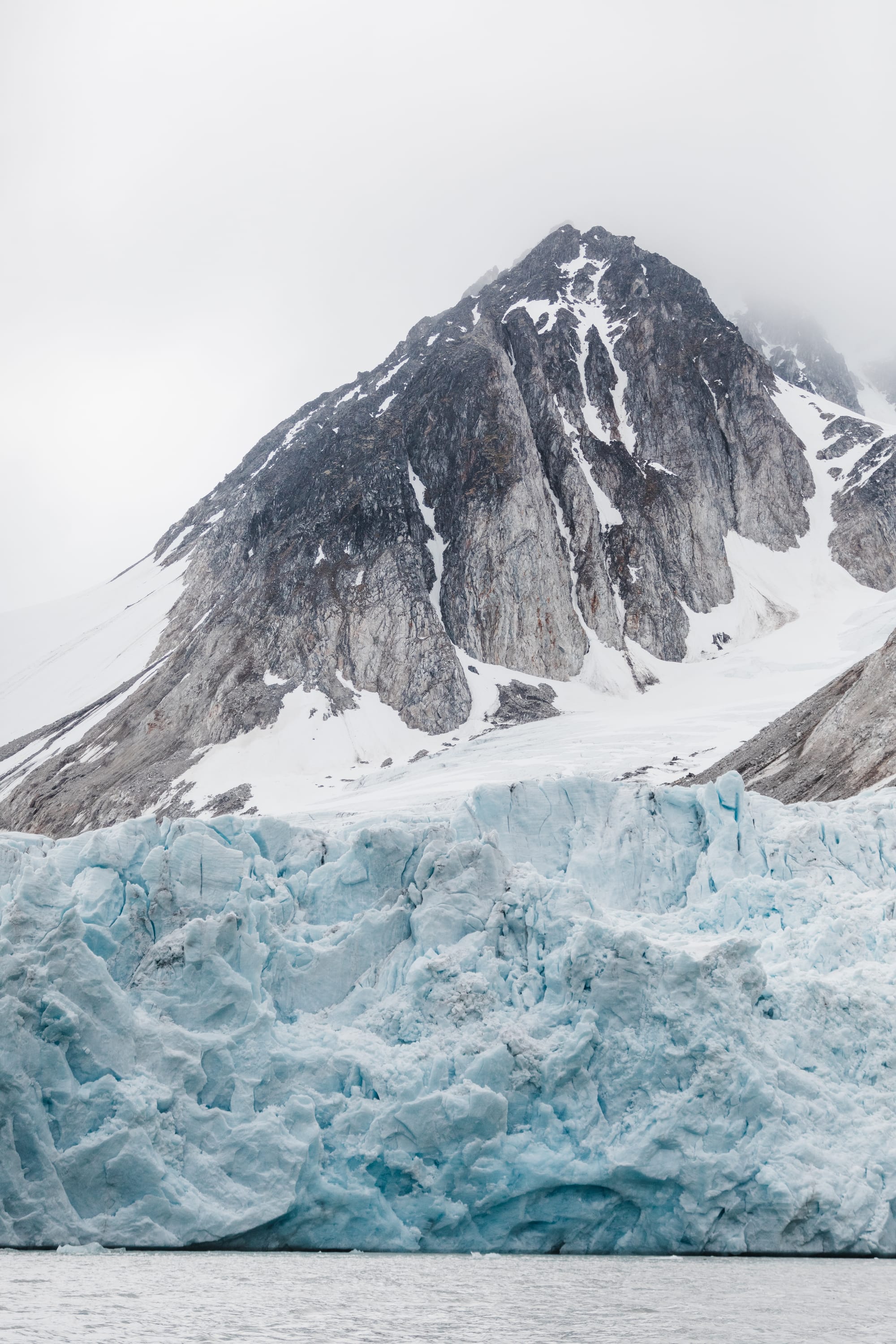

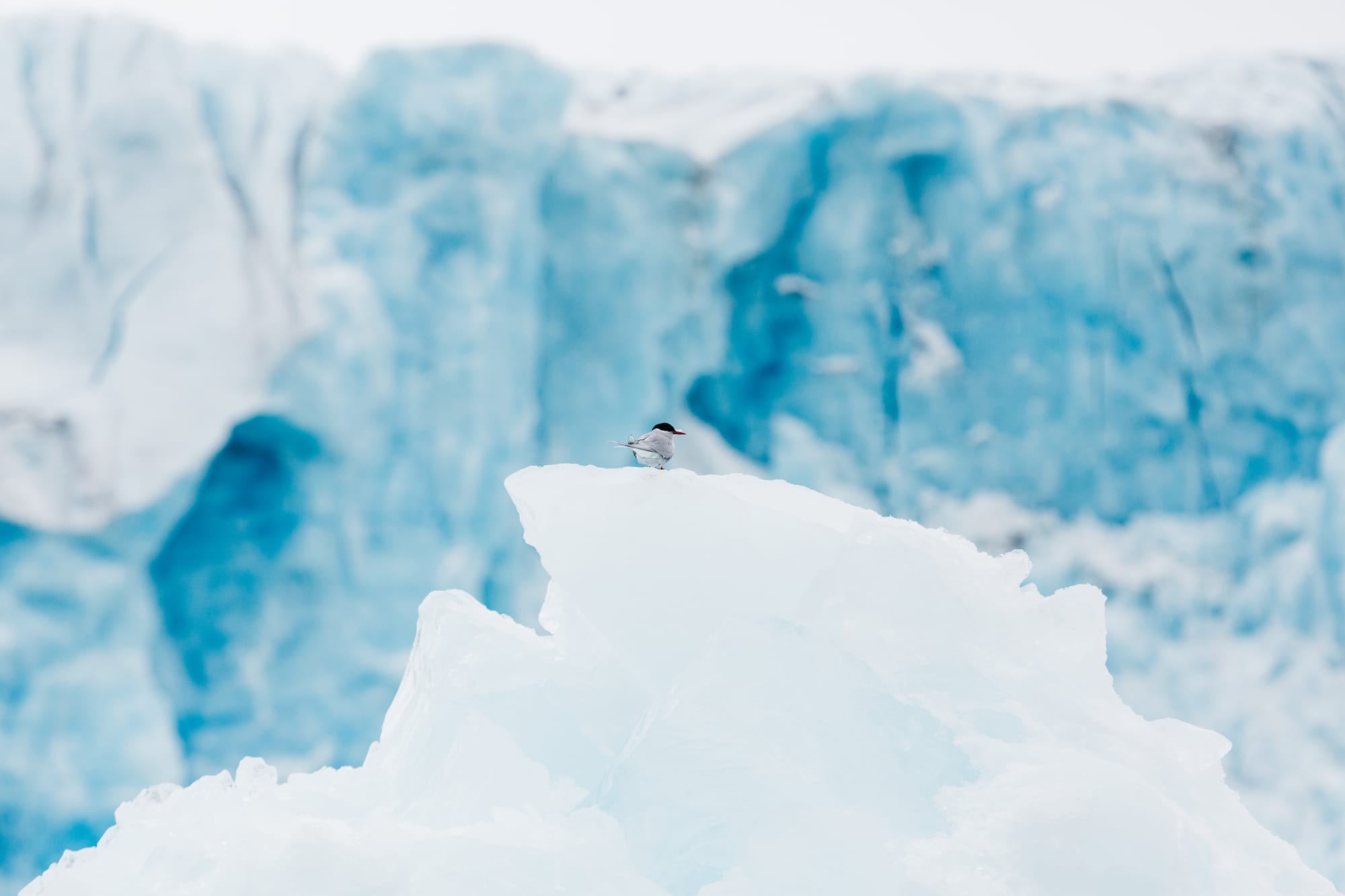

Photos by Karthika Gupta
When light hits these crystals, they absorb long wavelengths of other colors and scatter short-waved blue light, making the ice appear blue. This transformation occurs predominantly along the glacier’s leading edge, where the ice is calving and breaking apart, allowing us to witness nature’s intricate and breathtaking artistry in motion.
Yellow and Red Rock
It’s a common misconception to perceive the Arctic as a frozen expanse of sea. In reality, this region encompasses eight countries: Norway, Sweden, Finland, Russia, the United States (Alaska), Canada, Denmark (Greenland), and Iceland, each with its unique territories. These lands are characterized by their rugged and imposing mountain peaks standing tall in this frigid domain. In winter, they are encased in pristine layers of snow, and the water around them is frozen pack ice.
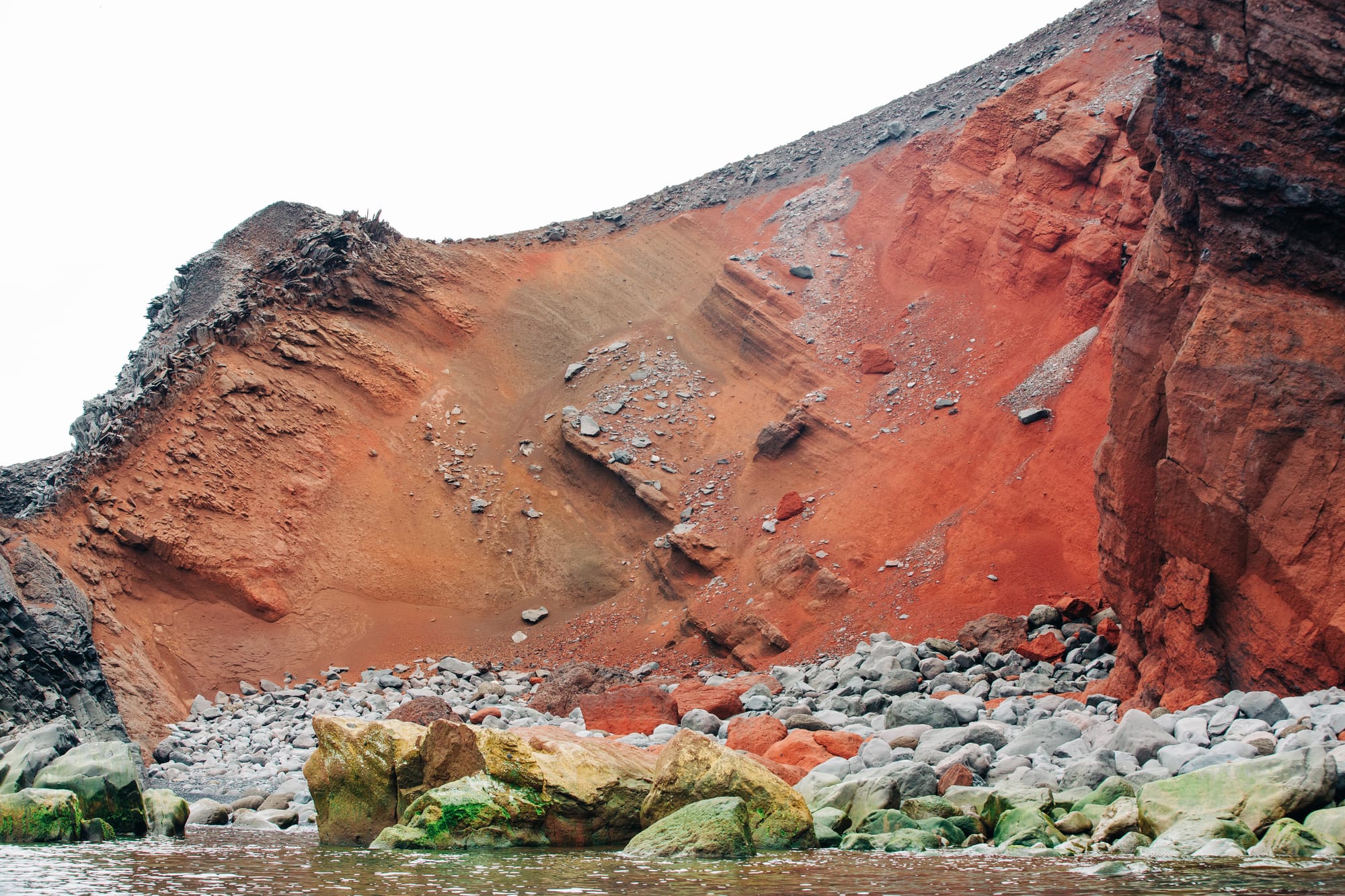

However, the Arctic transforms itself in the summer. As the snow at sea level gradually melts away under the warmth of the sun, it unveils a striking spectacle. The exposed rock, predominantly composed of volcanic basalt, reveals its true colors. Rich green moss carpets the landscape, and the iron content within the basalt rock infuses shades of red and yellow, adding an unexpected vibrancy to this harsh yet astonishingly beautiful terrain.
Black, White, Red, and the Orange of a Puffin
Puffins, a remarkable group of marine birds, are easily distinguished by their distinctive plumage, ranging from black and dark gray to a striking black-and-white combination, and their brilliantly colored beaks.
Throughout the year, Atlantic puffins maintain a consistent color pattern, featuring black plumage above and white below. However, their appearance undergoes a striking transformation during the breeding season. Breeding puffins showcase a flamboyant bill adorned with vivid black, orange, and yellow hues. Their faces take on a grayish-white hue.

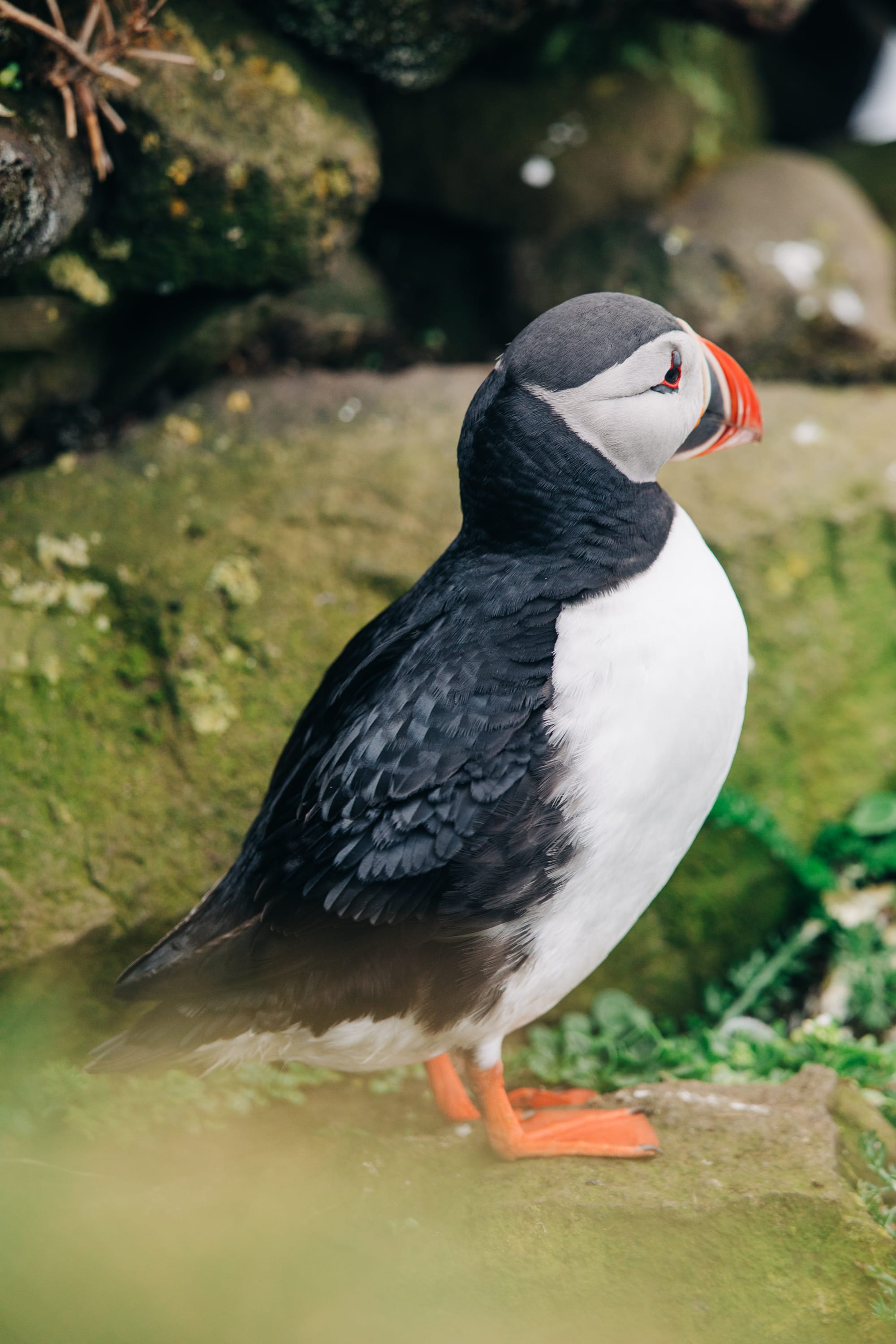

Atlantic puffin. Photos by Karthika Gupta
In contrast, during the non-breeding season, their facial plumage darkens to a deeper gray, and their bills lose their yellow accents while shrinking slightly in size. This variation in appearance adds to the allure of these captivating birds as they navigate the changing seasons of their habitat.
Pistachio Green from An Eider Duck
The eider duck, a denizen of the chilly northern regions, boasts a heartwarming reputation thanks to the exceptional insulating properties of its down, often harvested without harming the birds. Male eider ducks, in their breeding plumage, present a striking combination of white and black feathers, complemented by pistachio green accents on their necks that resemble the hue of a tennis ball. In contrast, the females exhibit a charming pattern of warm brown and black bars.

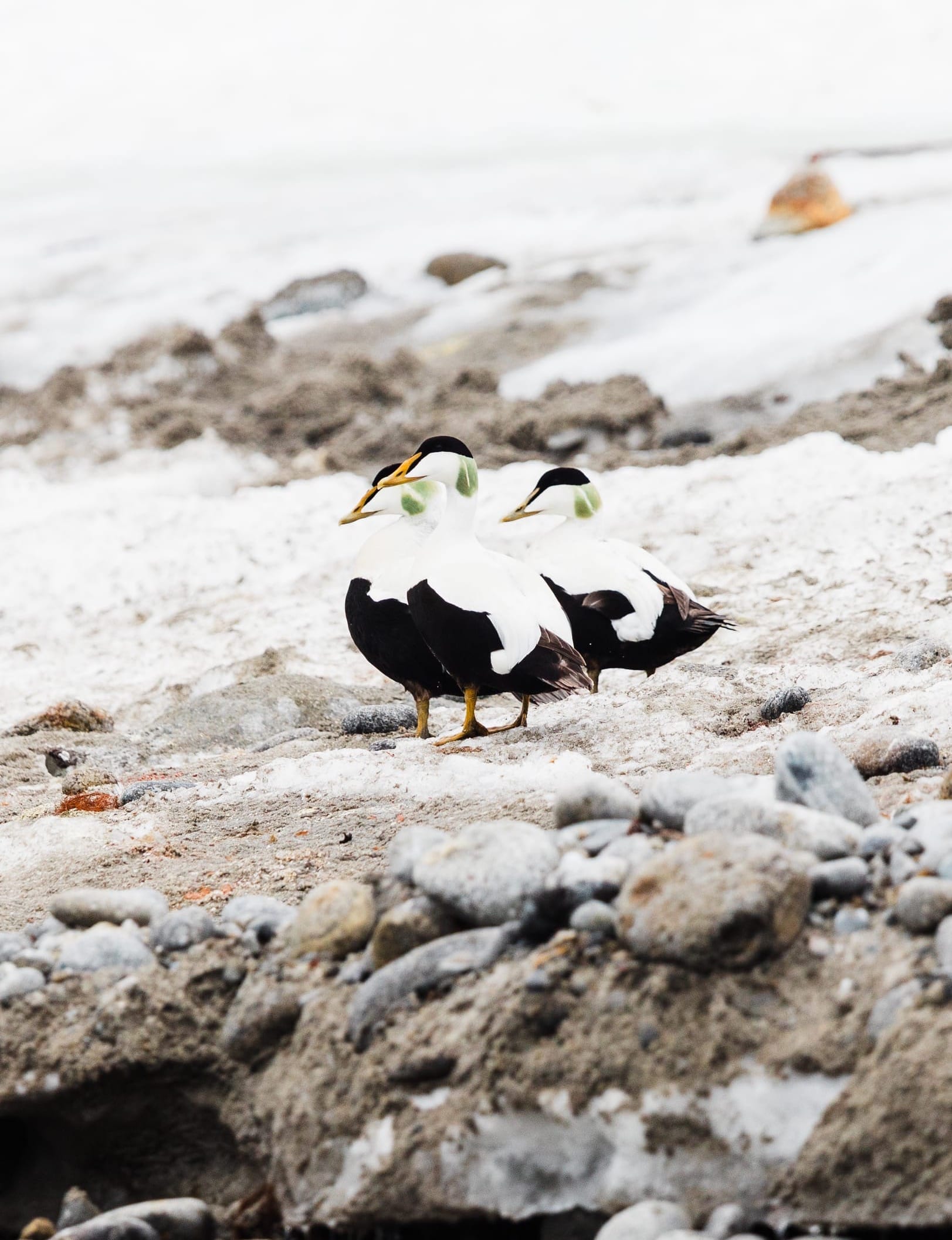
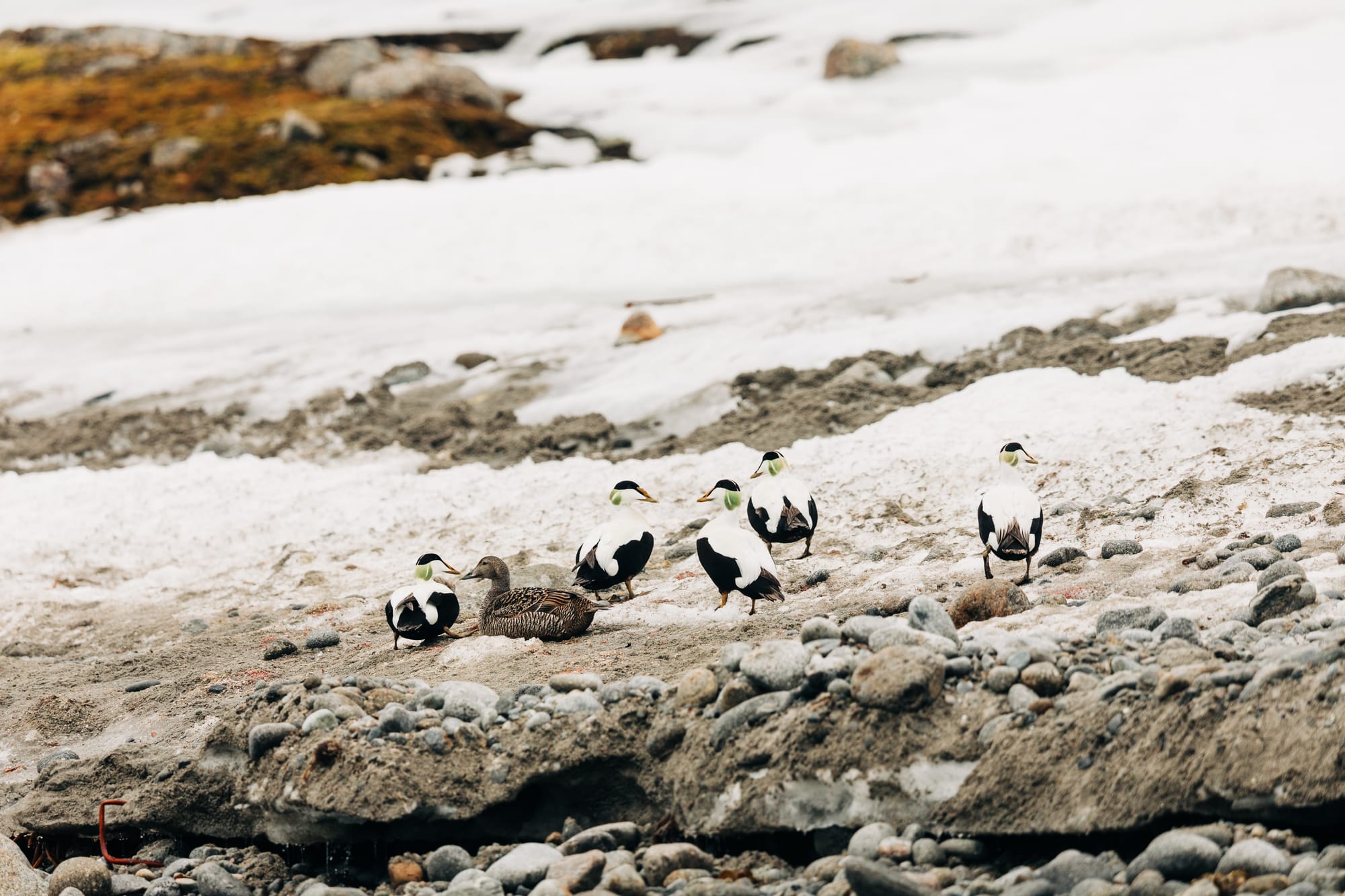
Eider ducks. Photos by Karthika Gupta
Red and Black from An Arctic Tern
Arctic terns are striking birds with elongated, angular wings featuring pointed wingtips. These graceful creatures possess small, rounded heads, steep foreheads, and notably short legs. Breeding adults sport a distinctively forked tail. Their plumage is pale gray both above and below, highlighted by a full black cap extending down the neck’s rear. In addition, they showcase a vibrant red bill and legs, adding a dash of color to their appearance.
Flora
In contrast to the stark monochromatic beauty of the Antarctic landscape, one of the captivating sights when exploring the high Arctic, particularly regions like Spitsbergen and Greenland, is the vibrant colors of the tundra’s plant life. These plants, which call the high arctic home, possess remarkable resilience, enduring sub-zero temperatures for much of the year and adapting to wetland conditions that arise during the brief summer months as the ice begins to thaw.
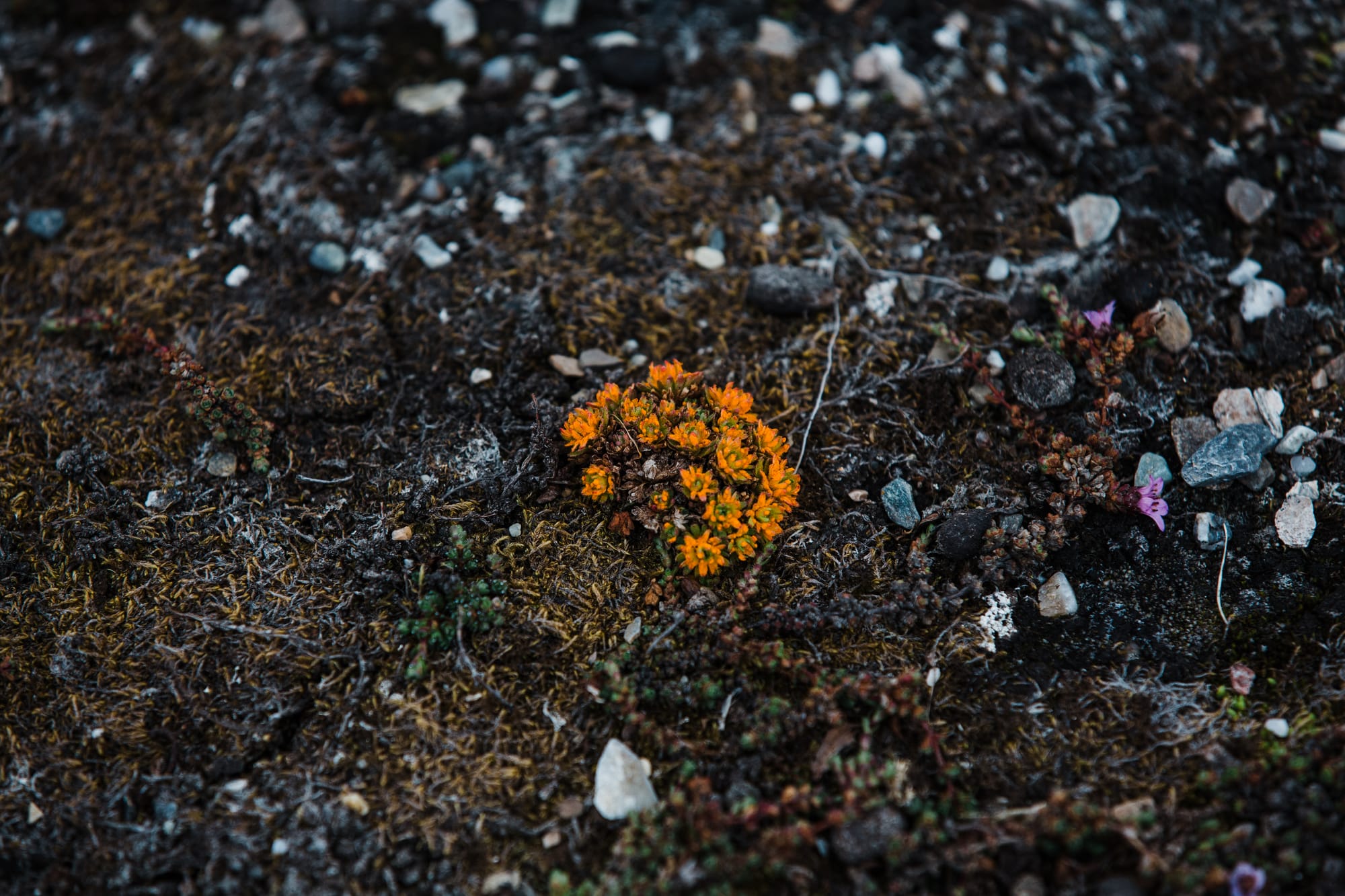
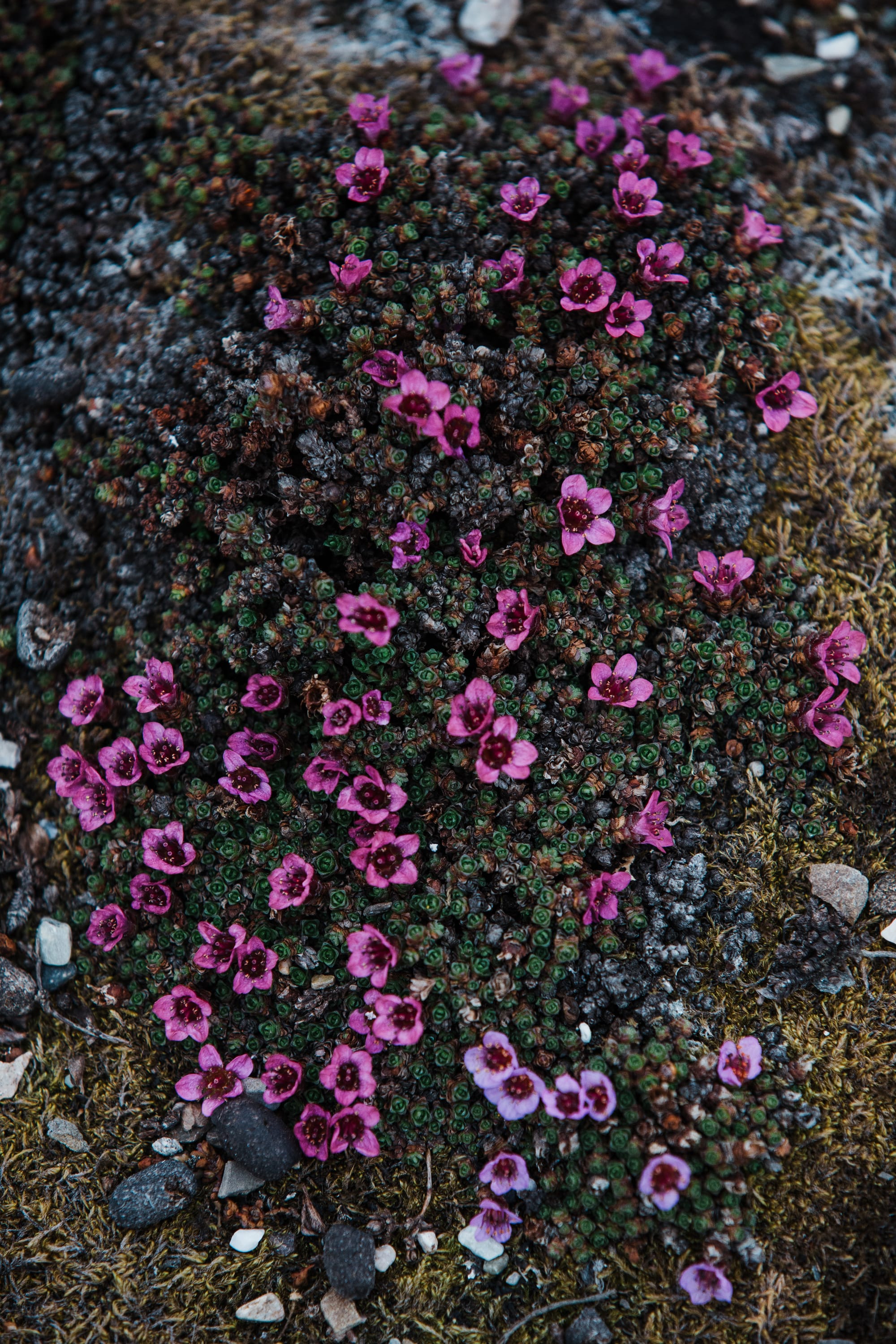

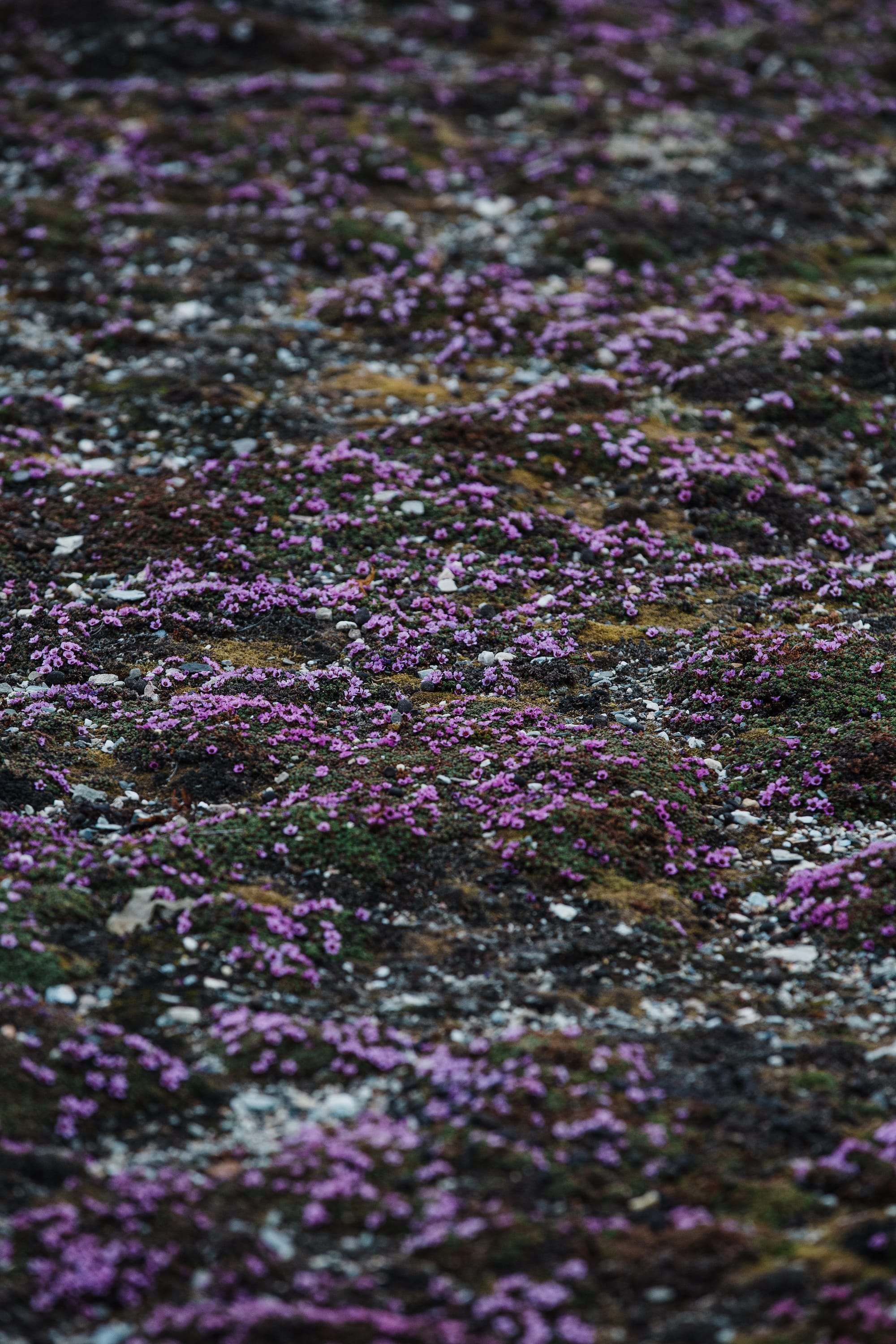
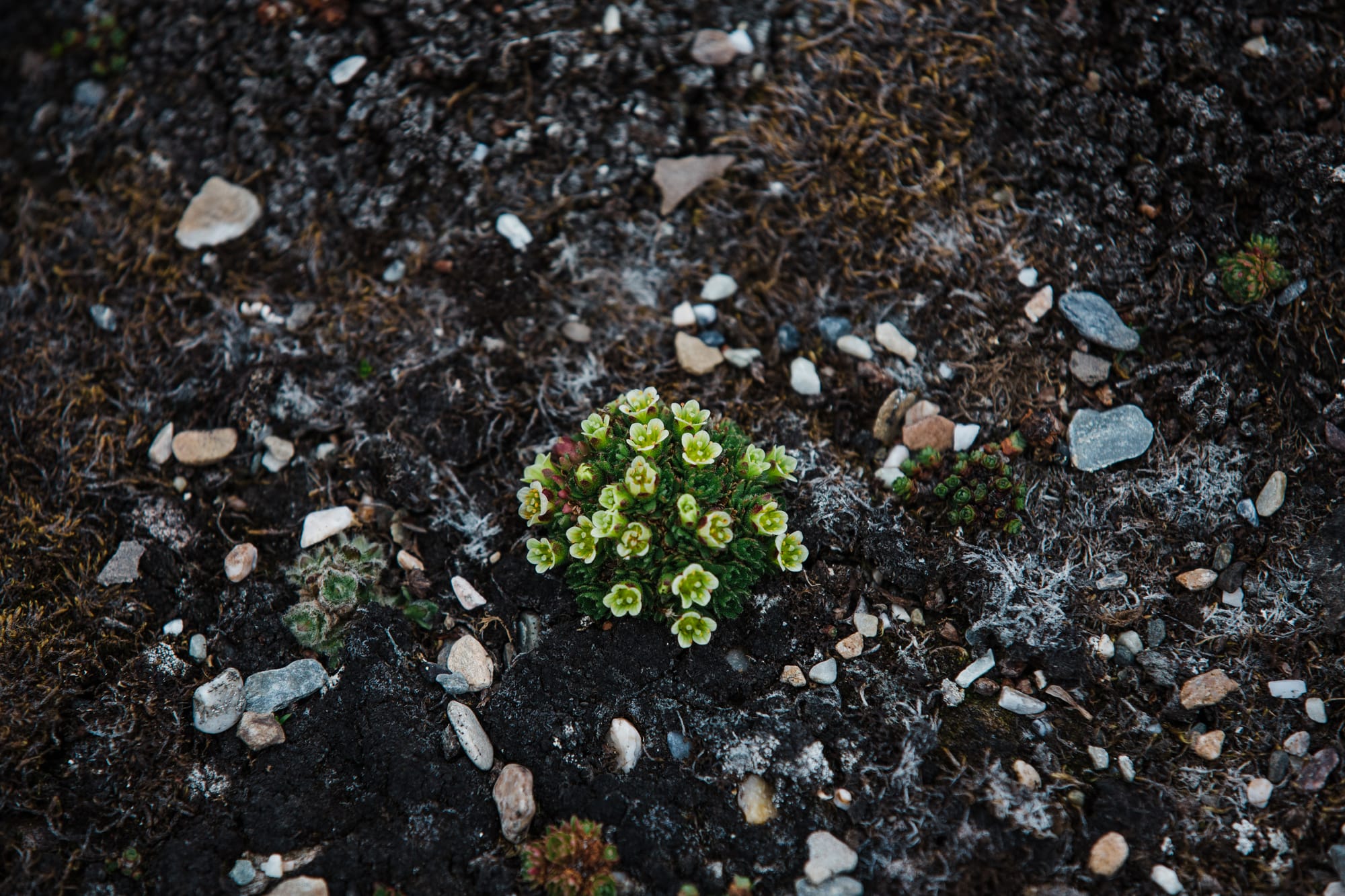
Photos by Karthika Gupta
Beneath the surface, the land is cloaked in permafrost, an enduringly frozen layer that lies beneath the earth’s surface. Composed of soil, gravel, and sand, often bound together by ice, permafrost creates a challenging environment for vegetation to thrive. Yet, against all odds, vegetation flourishes in this frozen realm. For instance, in Svalbard, a remarkable array of wildflowers graces the landscape. These plants have evolved to be small, with shallow roots, maximizing their use of the thin layer of unfrozen earth. Their flowering period during the short summer is compressed, and their blooms boast an array of vibrant colors designed to attract the few pollinating insects that brave these harsh conditions.

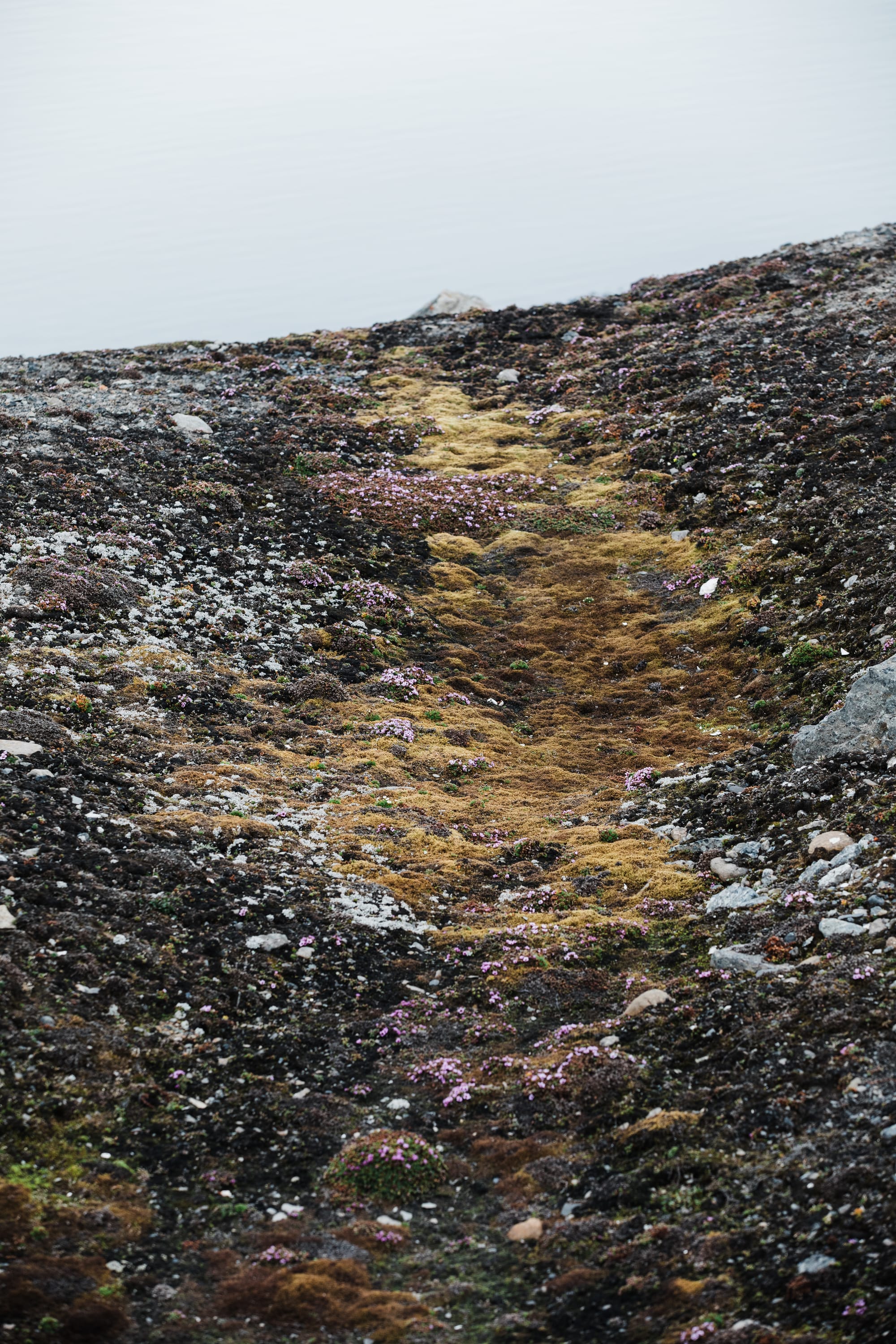

Photos by Karthika Gupta
The moss campion (Silene acaulis) is common throughout the high Arctic and the higher mountains of Europe and North America. It has a distinctive appearance, forming dense tufts that resemble “cushions”. These cushions are composed of elongated shoots with four or five small green leaves at their tips, while numerous remnants of old leaves can be found below.
The Svalbard poppy (Papaver dahlianum), a cherished emblem of this archipelago, thrives in a variety of rocky and gravelly habitats across the region. Growing up to 25 centimeters, it claims to be the highest-altitude flowering plant found on Svalbard, surpassing all others in elevation.
Human Settlements
One of the most striking features of towns in places like Greenland and Svalbard is the vibrant array of colors adorning the buildings. In these regions, where trees and shrubs are sparse, and there’s little visual separation between the towns and the surrounding mountains, the houses are built with a strong focus on utility and durability to withstand the harsh climate.
The strategic use of color in these buildings serves to strengthen the connection between human-made structures and the natural environment, enhancing the sense of place for both residents and visitors. Windows, doors, and even exterior staircases are often painted in bright and lively colors, creating contrast against the snowy backdrop and making them easily distinguishable, particularly during the long winter when these areas experience 24 hours of darkness.
A land of hidden colors, a brilliant tapestry of life and wonders beneath its frosty façade

So, the next time you consider snow as drab and lifeless or envision the Arctic as a realm of monotone grays and whites, think again. In a place where nature can seem formidable and unforgiving, lies one of the most exquisite and artistically inspiring color palettes known to humankind—including animals, plants, and even the man-made environment.
A version of this article appears in print, in Issue 3 of Álula Magazine with the headline: “Moods, Tones, and Colors of the High Arctic”.


